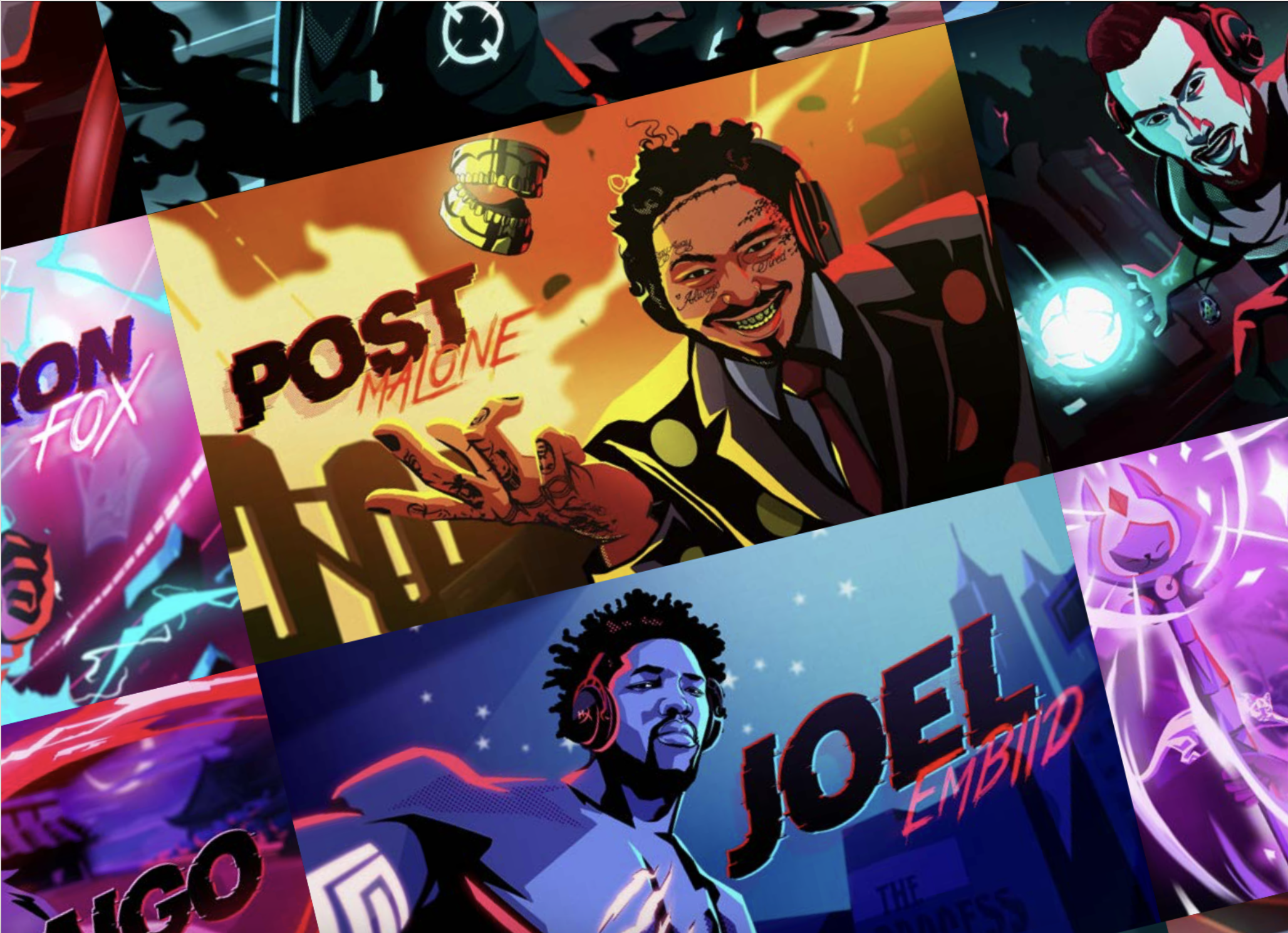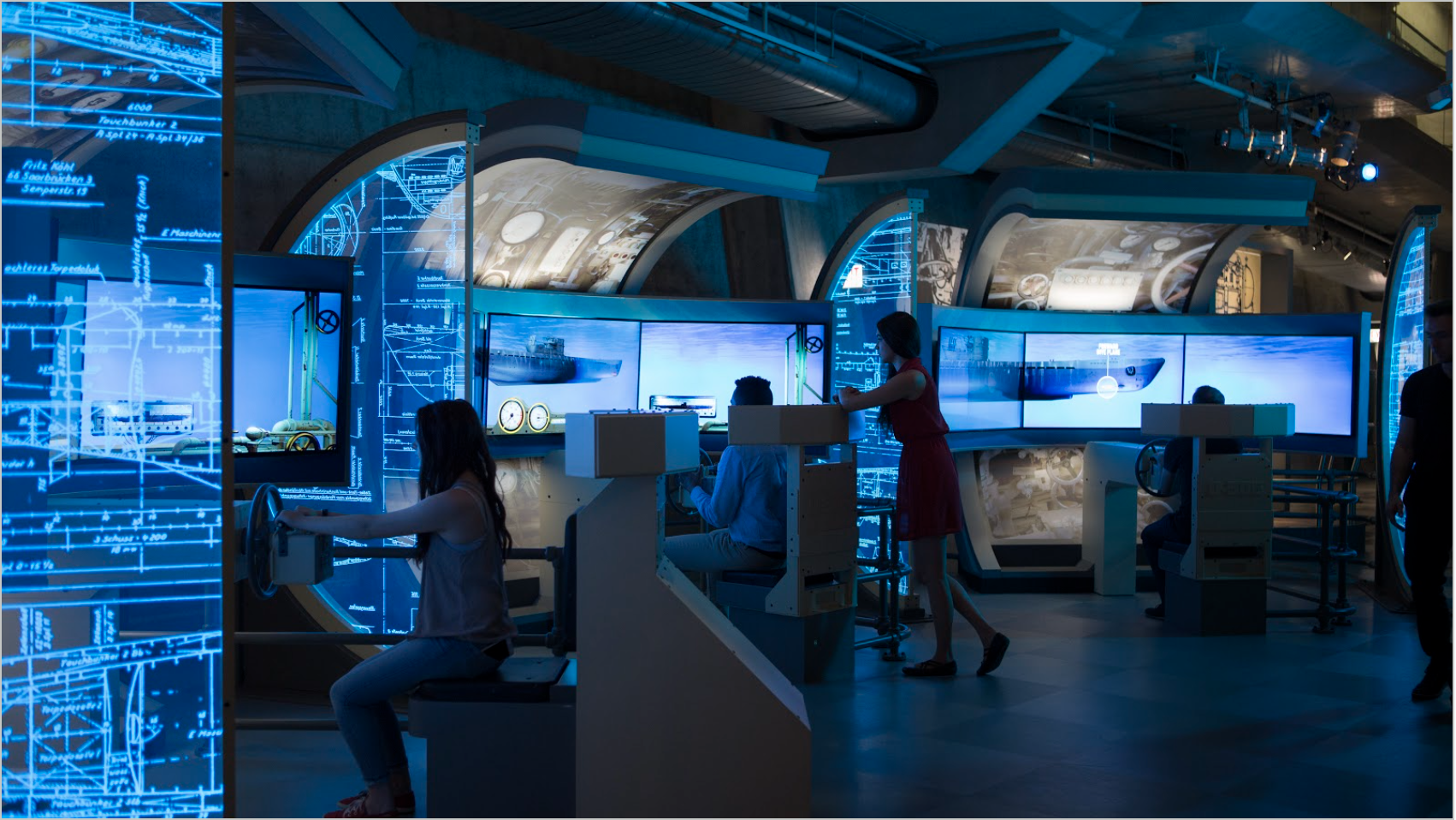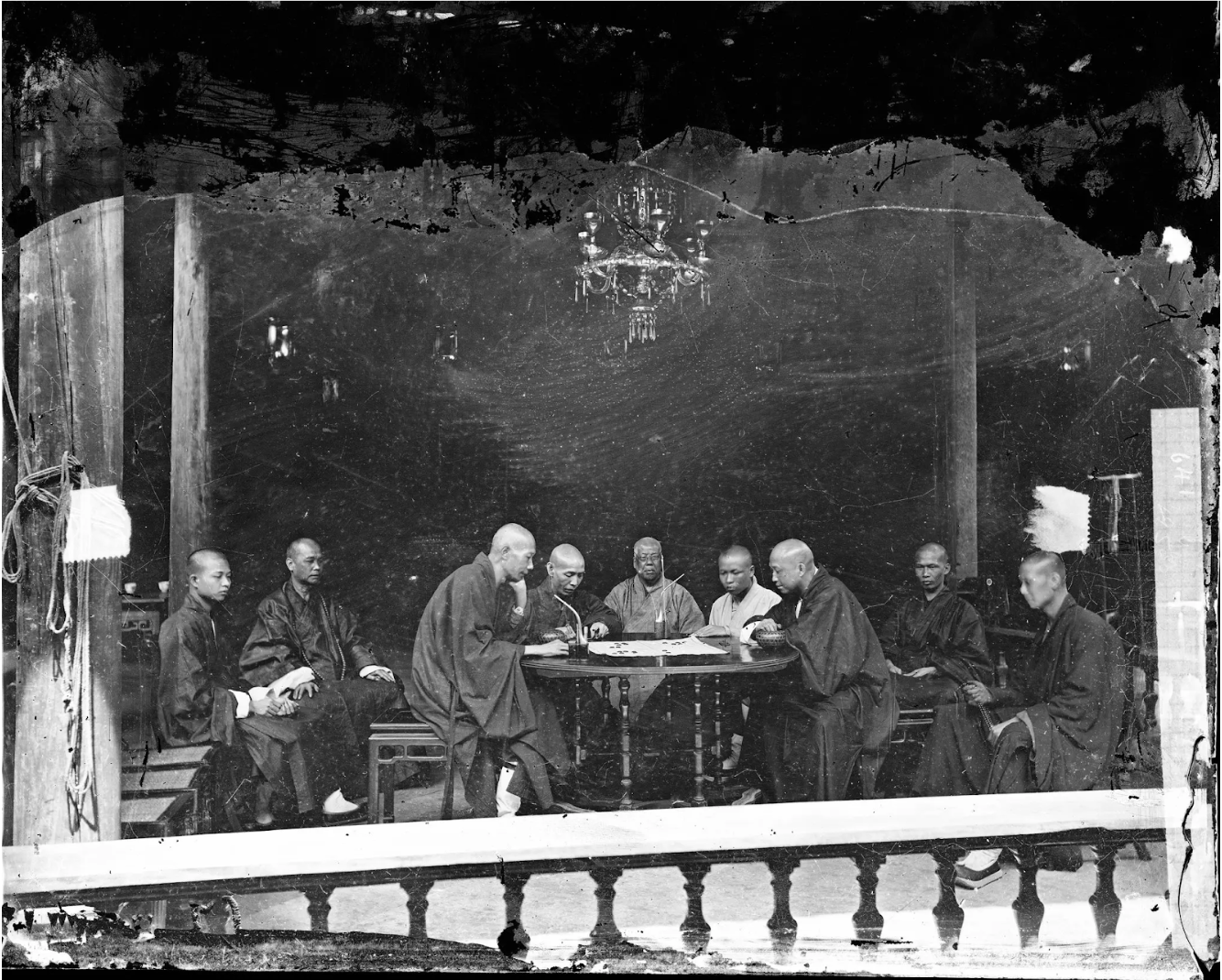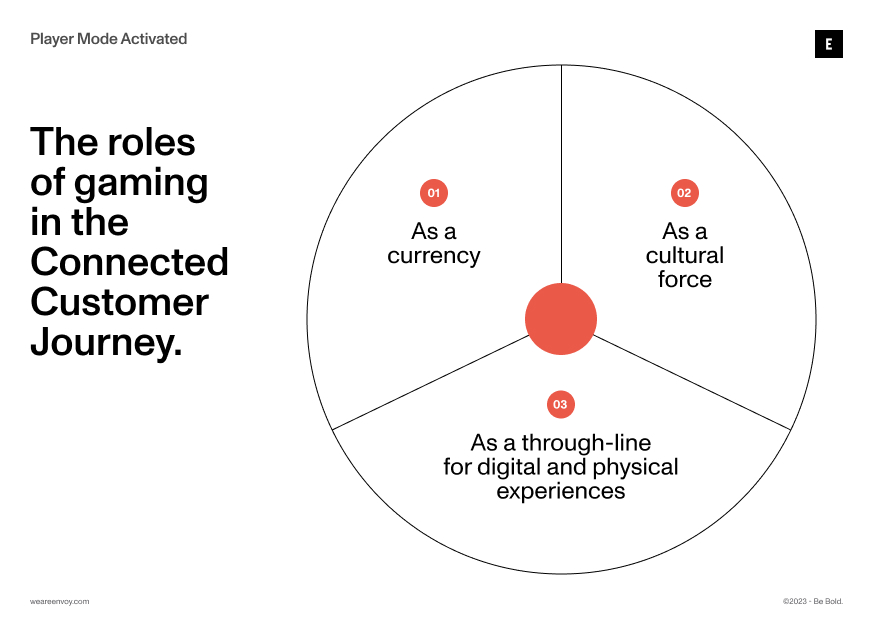Player Mode Activated
August 24, 2023
HyperX Campaign Visuals

Gaming as a part of the connected customer journey
At Envoy, we talk a lot about “connected customer journeys” those end-to-end, immersive experiences we set out to create for brands. More than “omni-channel”—where or when of a brand engagement—the connected customer experience is about the why, the reasons people engage with you. And play, especially play through gaming, is a ‘why’ that brands of all ages, stages and ilks can employ in building encompassing, meaningful experiences.
Play as a currency in the attention economy.
Amidst our modern onslaught of content, play has become a powerful enabler of the connected customer experience. At a time most peoples’ attention spans have been whittled down to sound bytes and distraction abounds, play engages. It’s also an antidote to disconnection. Indeed, people are “opting out” in our mediascape more than ever making it critical that branded communications deliver value in return for attention.
Play is not only a relevant source of value for today’s consumer, but a deeply engaging one. The average length of a session on Twitch is twice that of one on Youtube (mediakix.com, 2021). And, unlike the passive consumption that characterizes a lot of other media, consumers are more likely to be actively engaged either in the game itself as well as the adjacent dialogue.
Whether it’s through overt branding in game (see Nissan’s charging stations in SIMs) or unlocking new sources of value (see Venus razors’ in-game skins) brands can use the lens of play in gaming to transform content into experiences.
Of course, play does not have to be playful. Brands and even causes of all types can engage with the principles of gamification to engage across a spectrum of emotional states and tone. Bloomberg’s American Mall and Propublica’s asylum project, for instance, tap into play behaviors to engage, educate and create deep empathy for stories that fall flat as headlines.
Spotlight: U505 Dive Stimulator, Museum of Science and Innovation
The U505 submarine exhibit has been a popular draw at the Museum of Science and Innovation since 1954. But as time has passed and the realities of war have faded from popular memory, the museum realized that they needed to reignite its story for a new generation. Envoy was engaged through our partner Luci Creative to create an immersive experience through storytelling, technology and the power of play.
To bring the realities of a WWII submarine to life, we built three experiences: Dive Trainer, Attack & Navigation and Buoyancy. The Dive Trainer experience is based on the historical pursuit of the U505 and its epic evasion of allied ships until being ultimately forced to the surface. Using 3 large screens, 4D sound and game-quality graphics, we created a literal game that visitors could play to understand what it might have been like to maneuver a submarine through a depth charge attack from above. At the end of the scenario, we share a message about the number of sailors lost due to submarine attacks in the second world war to ensure that, for however playful the experience might be, it is in service of conveying a message of respect and seriousness.
U-505 Dive Simulator

For the second experience, Attack & Navigation, we put visitors in the role of the aggressor. Using real-time game play and gorgeous real-time environments, we created an immersive experience in which the visitor is tasked with hunting a convoy of ships from below– spoiler alert, you’re the bad guy. Unlike the more somber conclusion of the Dive Test experience, Attack & Navigation uses play to further pique visitors interests about the history and engineering of the submarines, in particular.
Play as a throughline in the convergence of digital and physical.
At a time when the boundaries between real life and the digital have, effectively, blurred, gaming– and the promise of play– transect both.
To be clear, gaming was ‘meta’ long before Facebook rebranded by the same name. Throughout history, gaming has helped to transport people beyond their every-day realities and into transcendent states of flow. In an article published in the New York Times, “Why People Love Games,” Gaming is described as “a controlled form of freedom” that “occupy a strange place in our cultural consciousness.”
Monks playing a board game, Circa. 1870

Today, gaming allows us to literally create new worlds, be they as low-fi as Roblox or Minecraft or as surrealistically fantastic as Fortnite. And consumers move between these worlds and their IRL lives seamlessly. The relationships and emotions that arise in games and through play are now, for many, equally valid to those that they cultivate and experience in their physical lives. Players, for instance, build in-game memorials for fallen characters as a display of grief that, while not on par with that they might feel for an actual loved one, ascribe a value to the experience that goes way beyond the value of a pixel.
For a new generation of digital natives, relationships, identity and belongings in the digital realm are REAL. Brands don’t have to build a stable of NFTs to be a part of the economy in a new, blended reality but can instead look to it, study it, for inspiration. Strategic partnerships between Nerf and Fortnite and SIMs and MAC have produced IRL products in the vein of traditional brand association strategies, proving that gaming is not purely a digital play.

Spotlight: HyperX
When we were approached by Kingston Technologies to market their line of gaming peripherals, the company specialized in the highly technical business of computer technologies: memory cards, USBs, flash drives and more. So when it came to launching a sub-brand in gaming, they were lacking the street cred that typically gets gamers to take notice. To effectively expand this brand’s reach without alienating its core customer base, we needed to find a way to authentically bring HyperX out of the world of engineers and into the hearts, minds and heads of gamers, too.
We realized that to connect with the enigmatic world of gaming, we didn’t need to tap into a niche demographic, we needed to tap into a shared experience. No matter who you are, when you game, you become the most powerful version of yourself. Gaming gives you superpowers.
Our solution: We are All Gamers. We Are All Gamers. A platform that appealed to the thrilling, fun and powerful experience that gaming offers—and in which HyperX can help to fully immerse you.
To bring this idea to life, we engaged celebrity influencers from the NBA, NFL, music, esports and streaming. Their diverse experiences allowed us to convey an inclusive view of gaming will driving broad relevance for a relatively unknown brand. Each celebrity was portrayed in a way that emphasized their unique traits, personalities and the HyperX products they loved most. Using live footage and animation, we took people at the intersection of celebrity and culture like the Pittsburgh Steelers’ Juju Smith Schuster, top streamer Shroud and Post-Malone into larger-than-life gaming characters, an approach that also afforded visual consistency across the executions. As featured street fighter champion Daigo put it “We all have a gaming spirit that comes out when we compete, and HyperX has done an amazing job of capturing the idea that We’re All Gamers.”
The connected consumer experience was created across TV, video, social, OOH and email starting in January 2019. We even secured NBA sponsorship as “the official headset of the NBA” and ran spots featuring pro hoopsters Joel Embiid and Gordon Hayward during the 2019 NBA finals. The NBA sponsorship and related partnership with the Dallas Mavericks helped HyperX deliver its story to a massive new audience with in-arena inventory, activations and compelling social and digital offerings. As summarized by Mavericks owner Mark Cuban “HyperX brings an abundance of experience in the gaming community and will be a valuable partner both on and off the court during esports, tournaments and events.”
The recognition of gamers, not as an enigmatic subgroup but a part of culture on par with celebrities and athletes of all ilks resonated broadly and the campaign was picked up and rolled out in Europe and Asia, using regional celebrities to ensure relevance in each market.
Bringing it back to the connected customer experience.
As gaming cements itself as a staple in many American lives and social lives, brands must consider what role they might play either in the ecosystems themselves or in response to the new behaviors and affinities emerging from it. Gaming is now a part of the modern media mix and play is a real source of value for consumers young and old.
Interested in exploring new ways to think about your brand or business? Contact us at engage@weareenvoy.com or follow us on LinkedIn


